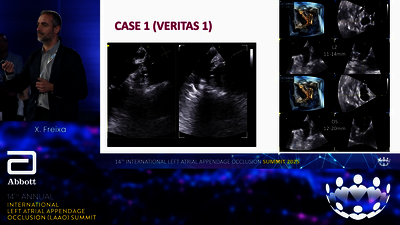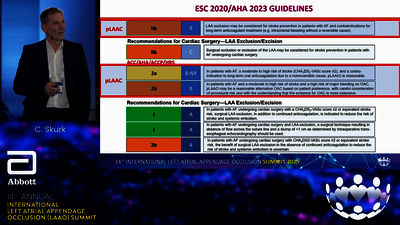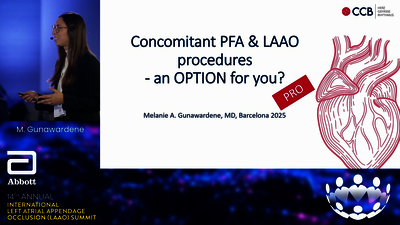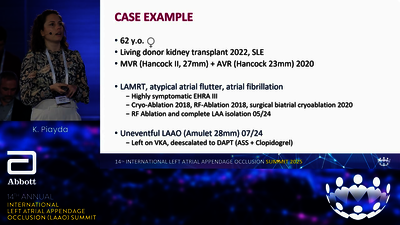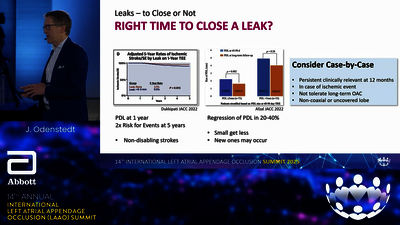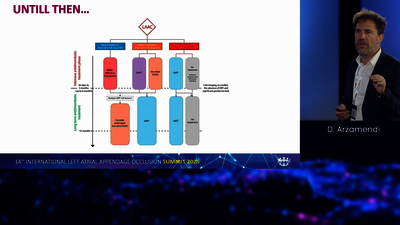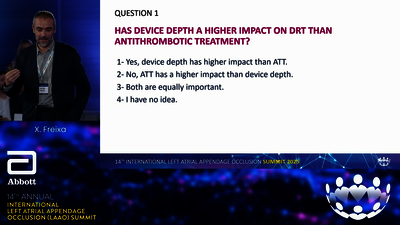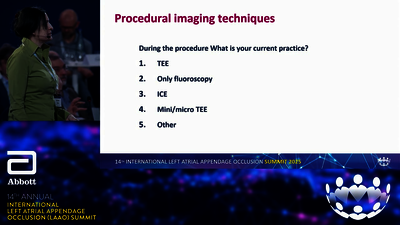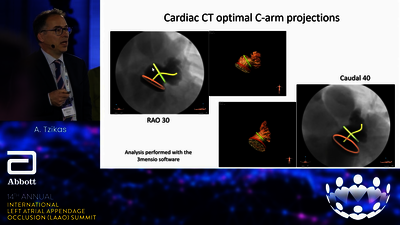Das patentierende Foramen ovale (PFO) ist ein embryonaler Defekt, der mit einem erhöhten Risiko für einen ischämischen Schlaganfall verbunden ist.1 Der Verschluss des PFO in Kombination mit einer langfristigen Thrombozytenaggregationshemmung wird empfohlen, um bei ausgewählten Patient:Innen einen erneuten Schlaganfall zu verhindern.2
Merkmale, die stark mit einer kausalen Rolle des PFO bei einem ischämischen Schlaganfall unbekannter Ursache assoziiert sind, sind:9
- Vorhofseptumaneurysma (ASA) und/oder ein mittelschwerer bis schwerer Shunt
- Hypermobilität des Vorhofseptums
- PFO-Größe
Das Vorhandensein anderer Risikofaktoren schließt ein PFO als ursächlichen Faktor nicht aus, aber ein PFO ist wahrscheinlicher, wenn die Patienten:Innen jung sind und keine anderen Risikofaktoren aufweisen. Um festzustellen, ob der Schlaganfall eines Patienten mit einem PFO zusammenhängt, sollte ein multidisziplinäres Team, bestehend aus einem Neurologen, einem Kardiologen und anderen medizinischen Fachkräften, die in der Versorgung von Patienten:Innen mit Schlaganfall geschult sind, hinzugezogen werden.4
ERFAHREN SIE MEHR ÜBER:
- Kent DM, Thaler DE. Is patent foramen ovale a modifiable risk factor for stroke recurrence? Stroke. 2010;41(10 Suppl):S26–30. doi.org/10.1161/STROKEAHA.110.595140.
- Messé SR, Gronseth GS, Kent DM, et al. Practice advisory update summary: patent foramen ovale and secondary stroke prevention. Neurology. 2020;94(20):876–885.
doi.org/10.1212/WNL.0000000000009443. - Homma S, Sacco RL. Patent foramen ovale and stroke. Circulation. 2005;112(7):1063–1072. doi.org/10.1161/CIRCULATIONAHA.104.524371.
- Mojadidi MK, Zaman MO, Elgendy IY, et. al. Cryptogenic stroke and patent foramen ovale. J Am Coll Cardiol. 2018;71(9):1035–1043.
doi.org/10.1016/j.jacc.2017.12.059. - Saver JL. Clinical practice. Cryptogenic stroke. N Engl J Med. 2016;374(21):2065–2074. doi.org/10.1056/NEJMcp1503946.
- Kernan WN, Ovbiagele B, Black HR, et al. AHA/ASA guidelines for the prevention of stroke in patients with stroke and transient ischemic attack. Stroke. 2014;45(7):2160–2236. doi.org/10.1161/STR.0000000000000024.
- Homma S, Sacco RL, Di Tullio MR, et al. Effect of medical treatment in stroke patients with patent foramen ovale: patent foramen ovale in cryptogenic stroke study. Circulation. 2002;105(22):2625–2631. doi.org/10.1161/01.CIR.0000017498.88393.44.
- Elgendy AY, Saver JL, Amin Z, et al. Proposal for updated nomenclature and classification of potential causative mechanism in patent foramen ovale-associated stroke. JAMA Neurol. 2020;77(7):878–886. doi.org/10.1001/jamaneurol.2020.0458.
- Pristipino C, Sievert H, D’Ascenzo F, et al. European position paper on the management of patients with patent foramen ovale. EuroIntervention.
2019;14(13):1389–1402. doi.org/10.4244/EIJ-D-18-00622. - Kernan WN, Ovbiagele B, Black HR, et al. Guidelines for the prevention of stroke in patients with stroke and transient ischemic attack. Stroke.
2014;45:2160–2236. doi.org/10.1161/STR.0000000000000024. - Diener H-C, Sacco RL, Easton JD, et al. Dabigatran for prevention of stroke after embolic stroke of undetermined source. N Engl J Med. 2019;380(20):1906–1917. doi.org/10.1056/NEJMoa1813959
- Saver JL, Carroll JD, Thaler DE, et al. Long-term outcomes of patent foramen ovale closure or medical therapy after stroke. N Engl J Med. 2017;377:1022–1032. doi.org/10.1056/NEJMoa1610057.
- Kasner SE, Rhodes JF, Andersen G, et al. Five-year outcomes of PFO closure or antiplatelet therapy for cryptogenic stroke. N Engl J Med. 2021;384(10):970–971. doi.org/10.1056/NEJMc2033779.
- Mas J-L, Derumeaux G, Guillon B, et al. Patent foramen ovale closure or anticoagulation vs. antiplatelets after stroke. N Engl J Med. 2017;377(11):1011–1021. doi.org/10.1056/NEJMoa1705915.
- Kavinsky CJ, Szerlip M, Goldsweig AM, et al. SCAI guidelines for the management of patent foramen ovale. JSCAI. 2022;1(4)100039. doi.org/10.1016/j.jscai.2022.100039.
- Kleindorfer DO, Towfighi A, Chaturvedi S, et al. 2021 Guideline for the prevention of stroke in patients with stroke and transient ischemic attack: a guideline from the American Heart Association/American Stroke Association. Stroke. 2021;52(7):e364–e467. doi.org/10.1161/STR.0000000000000375.
- Diener H-C, Akagi T, Durongpisitkul K, et al. Closure of the patent foramen ovale in patients with embolic stroke of undetermined source: a clinical expert opinion and consensus statement for the Asian-Pacific region. Int J Stroke. 2020;15(9):937–944. doi.org/10.1177/1747493020941658.
- The Japan Stroke Society, The Japanese Circulation Society, and Japanese Association of Cardiovascular Intervention and Therapeutics Guidance on Percutaneous Closure of Patent Foramen Ovale (PFO) in Cryptogenic Stroke Patients. pfo-council.jp/publications/ (accessed April 2023).
- Diener H-C, Grau A, Baldus S. Cryptogenic stroke and patent foramen ovale (abridged and translated version). Neurol Res Pract. 2019;1(1):1–10.
doi.org/10.1186/s42466-019-0008-2. - Kuijpers T, Spencer FA, Siemieniuk RAC, et. al. Patent foramen ovale closure, antiplatelet therapy or anticoagulation therapy alone for management of cryptogenic stroke? A clinical practice guideline. BMJ. 2018;362:k2515. doi.org/10.1136/bmj.k2515.
- Wein T, Lindsay MP, Côté R, et. al. Canadian stroke best practice recommendations: secondary prevention of stroke, sixth edition practice guidelines, update 2017. Int J Stroke. 2018;13(4):420–443. doi.org/10.1177/1747493017743062.
